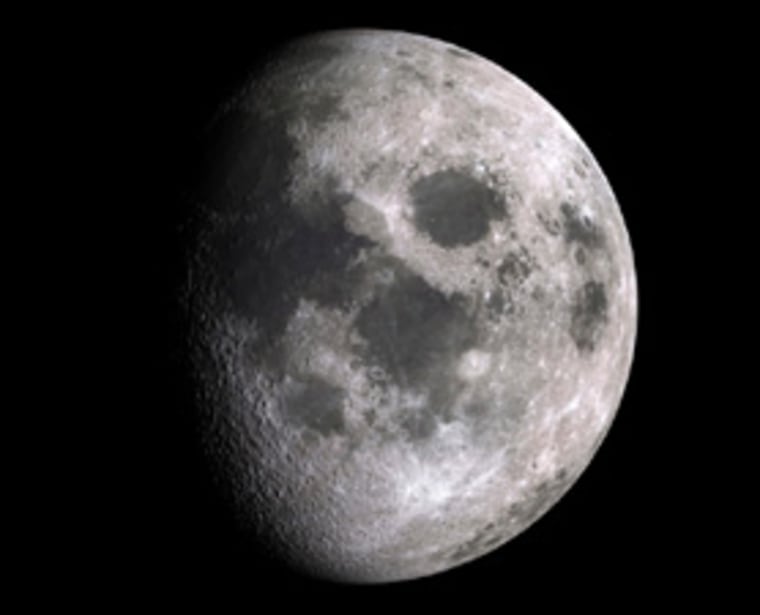The moon's whiff of an atmosphere has been sniffed by a Japanese spacecraft under very special conditions and confirmed as coming largely from sunlight brutally hammering the lunar surface.
Using the very first direct measurements of the moon's "exosphere" as the moon passed through the streaming tail of Earth's protective magnetic field, researchers were able to watch the short-lived and ever-changing exosphere in the absence of the hot, magnetized solar wind.
What they found confirmed that it's really just powerful ultraviolet light knocking beat-up atoms, or ions, off the lunar surface and manufacturing the bulk of the weak lunar perfume.
This discovery is important for several reasons, explains NASA lunar scientist Menelaos Sarantos. One is that it could help interpret what kinds of minerals are on the moon's surface.
"What comes out (as exosphere) more or less tells you the mineralogy of the surface," Sarantos said.
The ions and how they change over time also provide direct evidence of how much of a beating the lunar surface is taking, which is invaluable information for anyone hoping to house humans on the moon in the future.
"If you want to build a lunar base or put humans on the surface for any time," Sarantos said, "you want a well-defined radiation environment."
Slideshow 12 photos
Month in Space: January 2014
The experiment worked like this: When the moon passed inside of the tail of Earth's magnetic field — which streams off the Earth like a gigantic windsock whipping in the solar wind — the moon's surface was protected for about four days from solar wind, but not from sunlight.
So if the hot-particle-laden solar wind was the culprit in making the exosphere, the Japanese spacecraft SELENE should have seen a noticeable drop in the exosphere ions. But that's not what the Japanese research team saw.
"The ion fluxes were higher when the [sun was higher], which is consistent with the idea that the solar photon-driven processes dominates," writes Japan Aerospace Exploration Agency's Takaaki Tanaka, the lead author of the report.
In other words, powerful ultraviolet light photons are big-time exosphere-makers.
The report was published in the latest issue of the journal Geophysical Research Letters.
In addition to offering a better understanding our moon, the measurements may actually prove valuable in interpreting the exosphere of Mercury.
Early next year the NASA MESSENGER spacecraft will go into orbit around Mercury. About the only primer we have for understanding Mercury's exosphere, said Sarantos, will be the moon's.
Finally, Sarantos said, getting a better handle on the makeup of the moon's exosphere needs to be done now, because there's no telling how much longer it will remain pristine.
Several countries are, after all, now planning moon missions that could add all sorts of new stuff to the exospheric mix.

